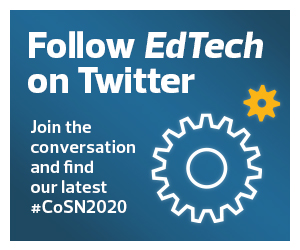Why Data Privacy Is a Hurdle for Learning Innovation
But mishandling or failure to protect data — particularly student information — can create significant challenges, including legal trouble, for K–12 schools.
K–12 schools collect reams of data, such as employee payroll, student attendance, bus routes and family income levels. That data, particularly information on children, makes districts prime targets for cyberattacks.
“Addressing student data privacy is complicated by well-meaning individuals who are eager to provide resources to students without considering the data privacy ramifications,” Susan Moore, supervisor of blended learning for Meriden Public Schools in Connecticut, said in the CoSN report. “Unclear laws, or an unclear understanding of laws that must often be interpreted by educators, not someone with a legal background, further complicates the issue.”
CoSN highlighted data privacy as a hurdle to educational innovation, along with evolution of teaching and learning, scaling and innovation, pedagogy versus the technology gap, and digital equity.
Online Learning Brings Challenges for Educators
Current efforts to adapt to offer online learning — quickly, in some cases — underscore the importance of the obstacles detailed in CoSN’s report. Digital equity is one example: Not all students have devices to take home for e-learning, and there are disparities in access to high-speed internet outside of school.
More than half of U.S. school districts have one-to-one computing environments, says Keith Krueger, CEO of CoSN.
“Many students, particularly low-income students, may have an internet connection, but it’s probably on a mobile device, and it’s probably data capped,” Krueger says. “So how do school systems ensure that you can do online learning? How do you do a virtual course when kids don’t really have broadband access at home and they might be sharing a device with their brothers and sisters?”
Another hurdle that will likely stand out as more schools attempt e-learning: The gap between pedagogy and technology.
E-learning will work well in places where the technology and curriculum departments “work hand in glove,” Krueger says. But e-learning efforts in places where those departments are “siloed, or they try to implement it just from the technical aspect, are less likely to be successful.”
Educators should also keep social-emotional learning, another accelerator, in mind as they tackle e-learning. Schools are placing greater emphasis on helping students to develop soft skills that support collaboration, problem-solving and civic responsibility.
“Social emotional well-being will be critical in our ability to co-exist, collaborate and implement solutions in a complex and diverse global context,” Beatriz Arnillas, a senior educational adviser at the cloud-based learning platform itslearning, said in the report.
Those skills also matter now, as tens of thousands of U.S. schools are closed or closing as part of efforts to help stem coronavirus outbreaks.
“Having kids at home, where they don’t have their classmates and they can’t interact with other kids is going to add stress,” Kreuger says. “And, of course, their parents are stressed about their job or about work and being at home. So how do we think about doing creating a healthy environment? And when all of that is happening at the same time, the stresses on the whole system are intense.”
Web Editor Micah Castelo contributed to this report.
In light of CoSN2020 hosting their virtual conference in May, we’re doing special coverage on remote learning. Keep this page bookmarked for our ongoing coverage. Follow us on Twitter @EdTech_K12 and join the conversation using #CoSN2020.











